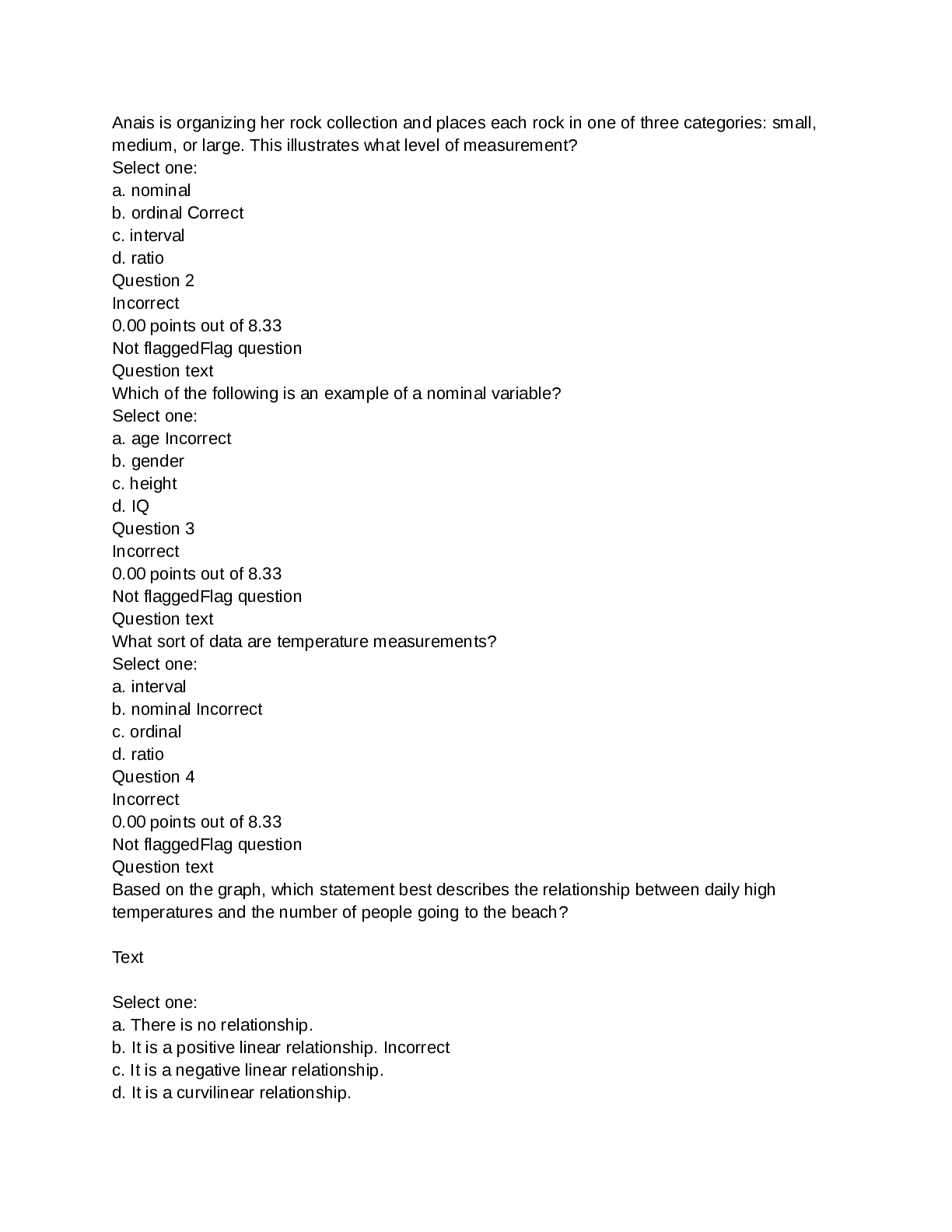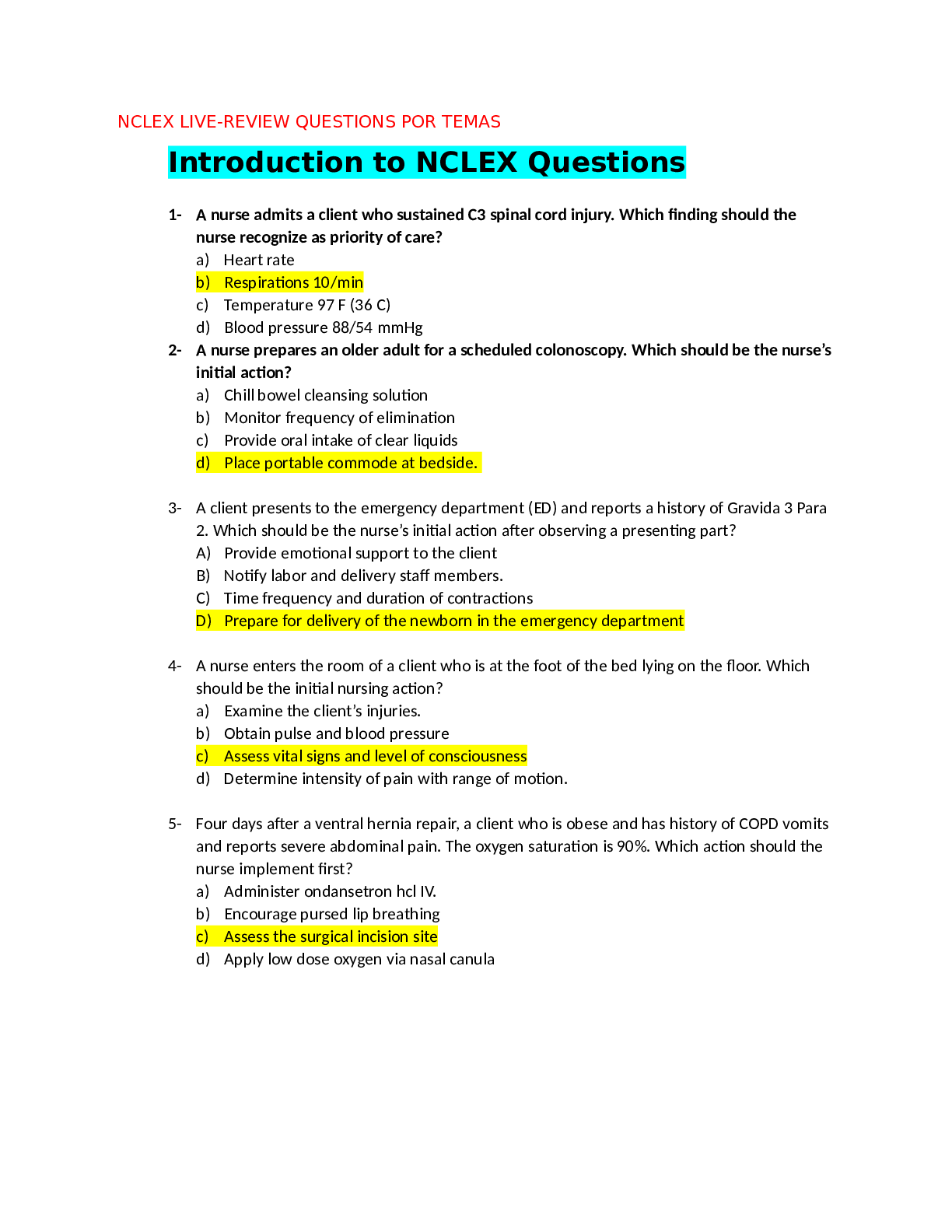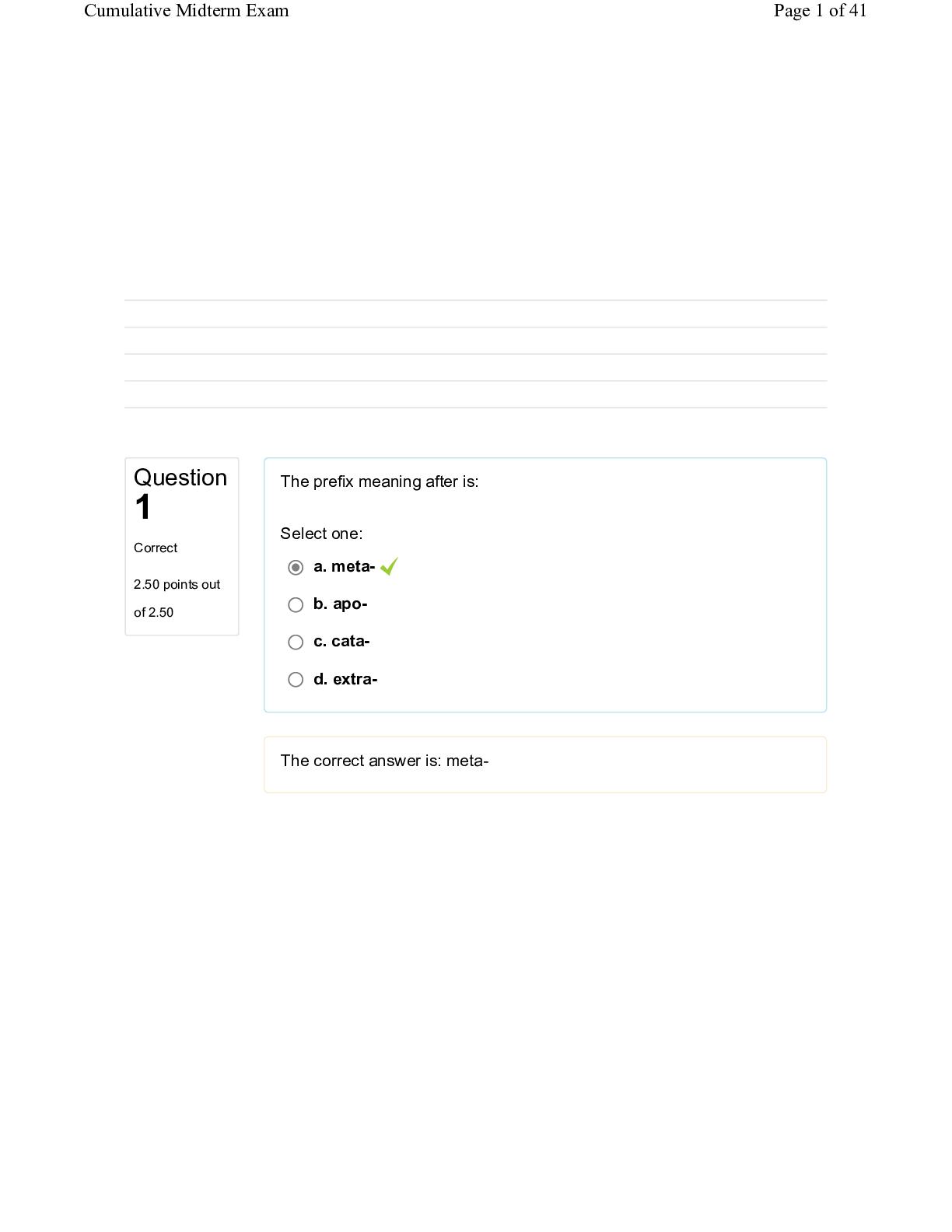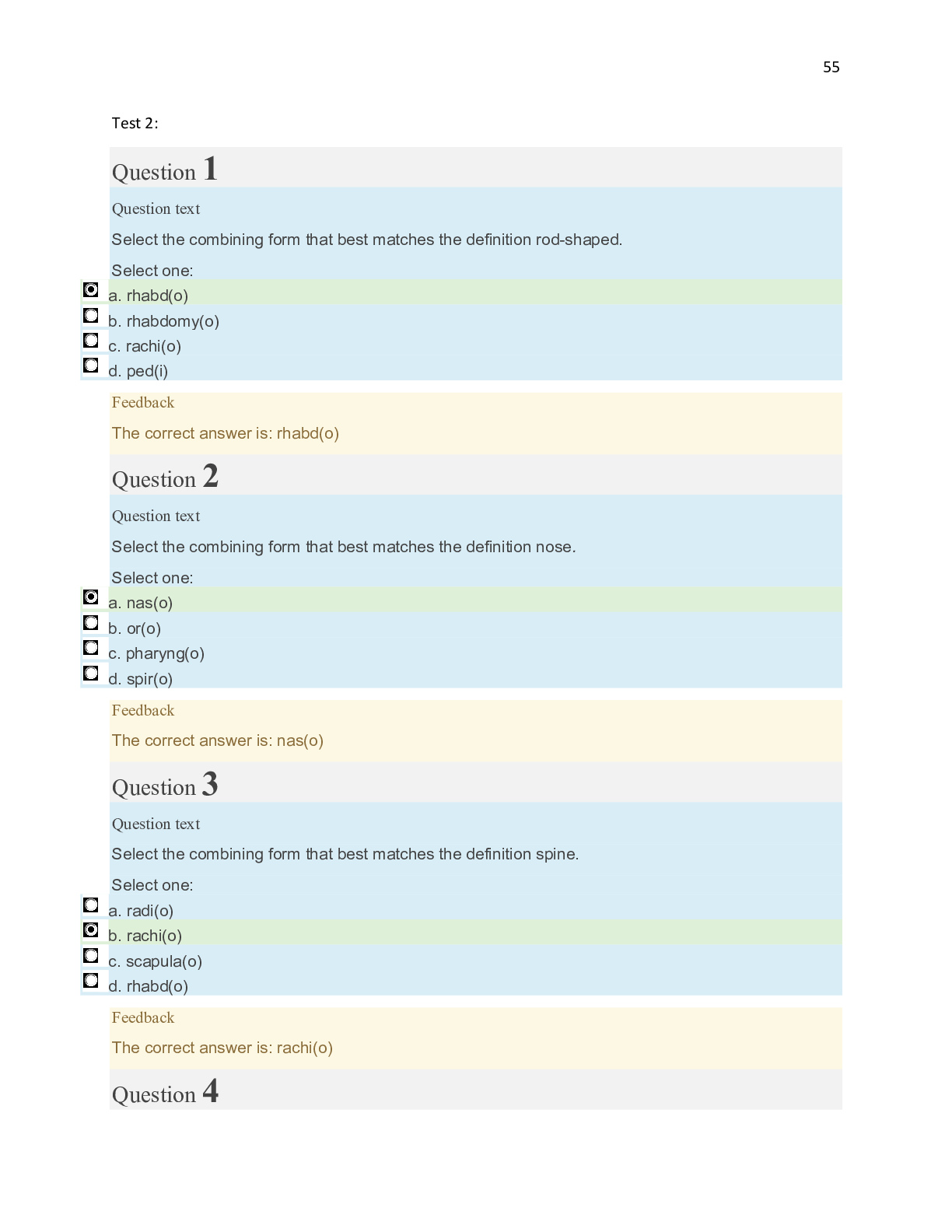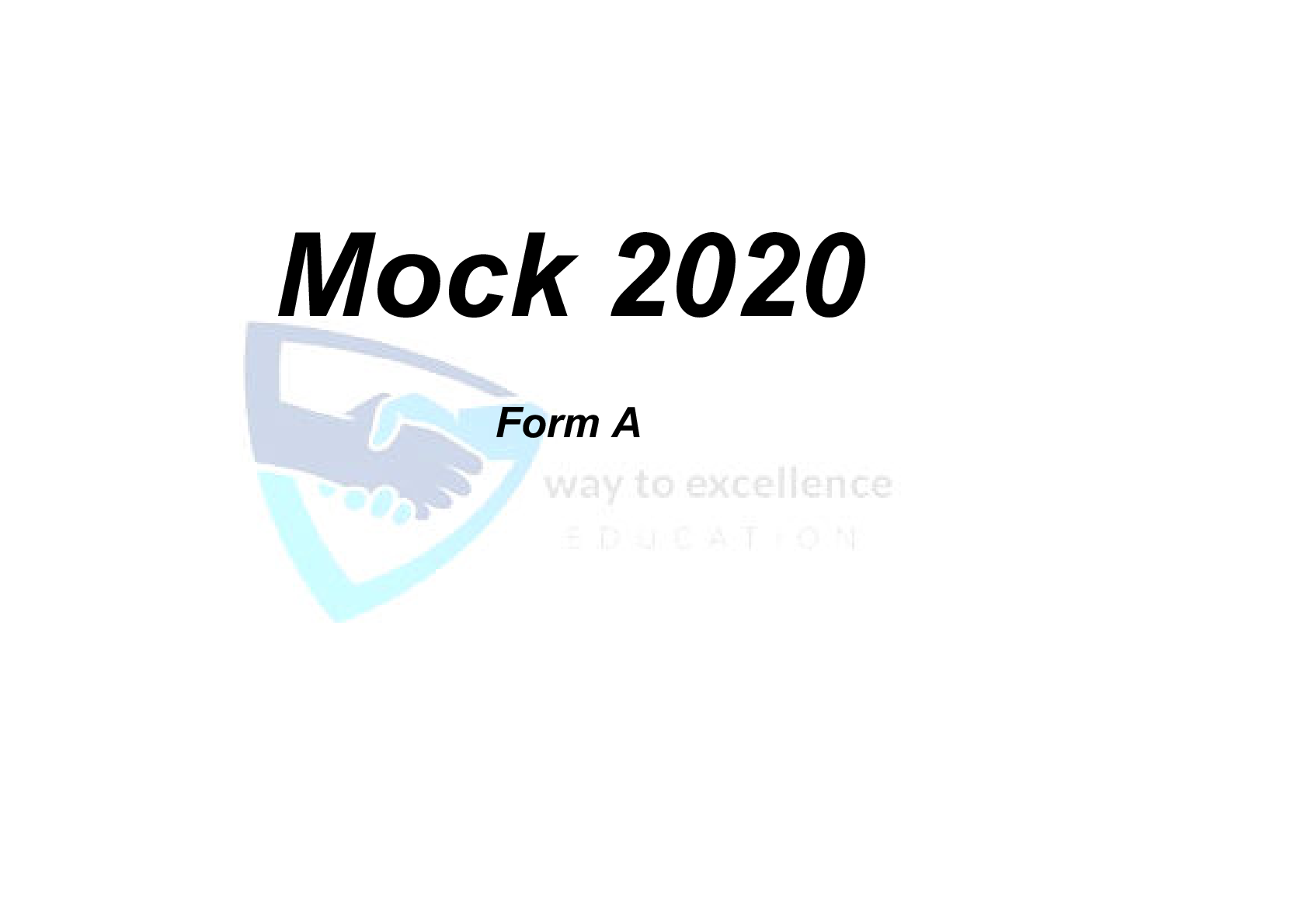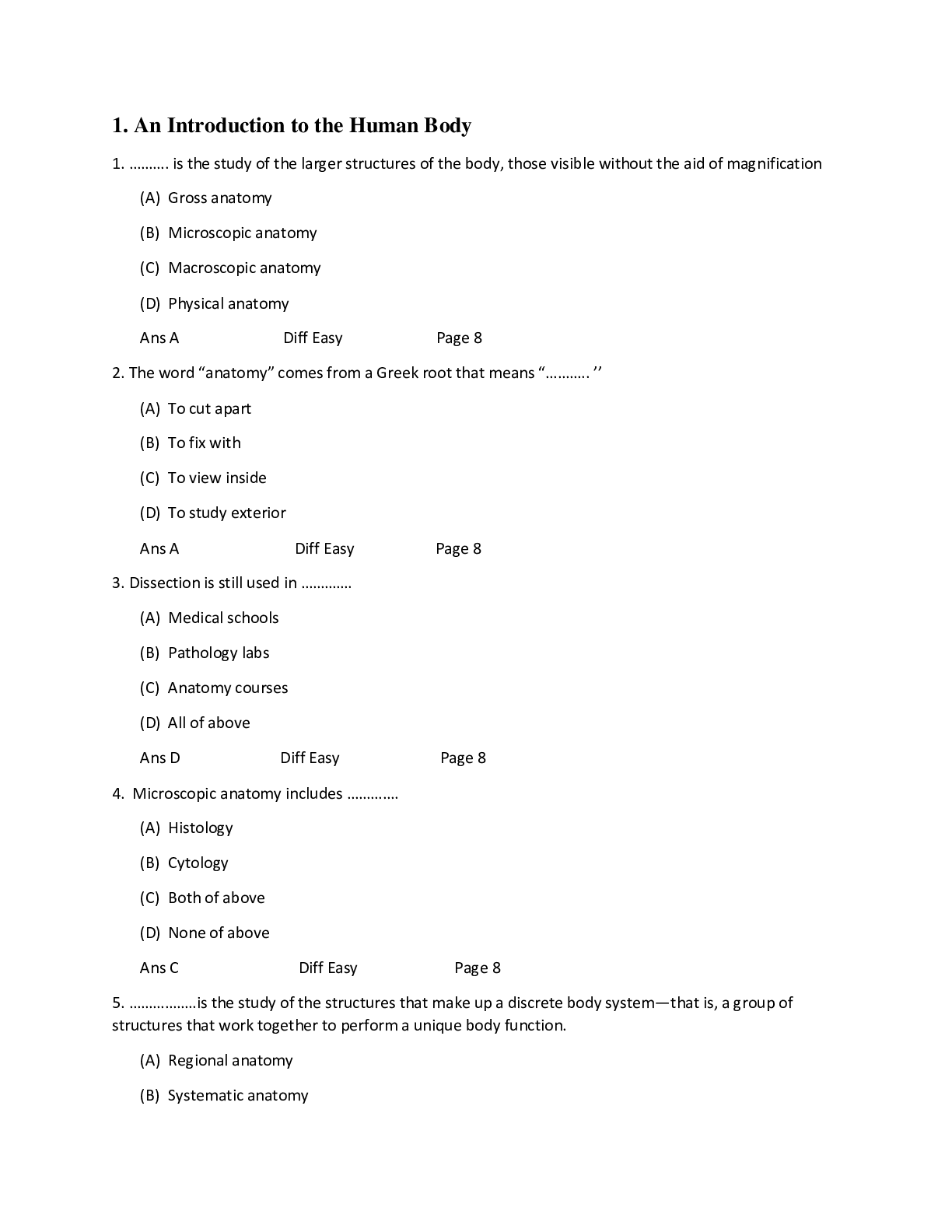Anatomy and Physiology - A&P 1 > QUESTION PAPER & MARK SCHEME > HUMAN ANATOMY AND PHYSIOLOGY MIDTERM EXAMS with ALL CORRECT SOLUTIONS [GRADED A+] (All)
HUMAN ANATOMY AND PHYSIOLOGY MIDTERM EXAMS with ALL CORRECT SOLUTIONS [GRADED A+]
Document Content and Description Below
1. A febrile seizure would most likely occur in a child: a. With a fever that acutely spikes 2. Which of the following actions demonstrates a paramedics knowledge of crime scene preservation? a. A... dvising a law enforcement officer after moving a coffee table to access a critically injured oatient 3. Which of the following signs or symptoms occurs more commonily in patietns with stable angine than in those with unstable angina? a. Chest pain that begins during exertion 4. In contrast to an anaphylactic reaction, an anaphylactoid reaction: a. Can occur without prior exposure to an offending agent 5. You are transporting an 80-year-old female to the hospital and are preparing to call in your radio report. Which of the following is an example of a practice that will maximize the receiving facility's ability to understand your transmission? a. State the patient's age as 80, that is, eight-zero 6. A 9-month-old infant presents with respiratory distress. On appearance, the infant is active and has moderate retractions. Your assessment reveals diffuse wheezing; pink, warm, dry skin; and an oxygen saturation of 92%. This infant is MOST likely experiencing: a. bronchiolitis 7. You are ventilating a severely dehydrated apneic 70-year-old male with a history of end-stage emphysema. In order to minimize the risk of lowering his cardiac output and blood pressure, you should: a. Adjust the ventilation rate to allow complete exhalation 8. Which of the following cardiac rhythms is associated with bradycardia, and is characterized by regular R-R intervals and a greater ratio of P waves to QRS complexes? a. B) Third-degree AV block 9. According to Haddon's matrix, which of the following is an environmental factor that has a direct effect on the event phase of a motor-vehicle crash? a. C) Lack of guardrails 10. Immediately following delivery, your patient is experiencing heavy vaginal bleeding. In an attempt to control the bleeding, you should: a. ) firmly massage the fundus of her uterus. 11. A 30-kg child presents with a regular, monomorphic, wide-complex tachycardia at 190 beats/min. He tells you that his chest feels funny, but otherwise has no other symptoms. He is conscious and alert and his vital signs are stable. Which of the following interventions is indicated? a. Adenosine, 3mg 12. You are ventilating an apneic, intubated patient and note that his ETCO2 reading, per waveform capnography, is 56 mm Hg. You should: a. Increase the rate of ventilations 13. An unresponsive trauma patient has sonorous respirations and blood draining from the corner of his mouth. What should be your FIRST action? a. B) Perform a jaw-thrust maneuver 14. An older man is suddenly awakened in the middle of the night, gasping for air. He is extremely restless and pale, and is coughing up blood. His clinical presentation is MOST consistent with: a. C) left side heart failure. 15. At the scene of a motor vehicle accident, you note that the driver, a young woman, is lying next to her car and has agonal gasps and no palpable pulse. Other than a closed tibial fracture, she has no other obvious trauma. She is wearing a bracelet that identifies her as an organ donor. How should you manage this situation? a. A) Begin aggressive treatment and transport immediately. 16. Upon arriving at the residence of an unresponsive patient, you find a middle-aged male lying on the couch. He is unresponsive, apneic, and pulseless. His wife tells you that she does not want you to attempt resuscitation, and further states that he has high blood pressure. The patient's skin is warm and there is no evidence of lividity. You should: a. B) begin CPR, apply the ECG electrodes, ask her if he has a living will, and contact medical control for guidance. 17. Which of the following findings is MOST suggestive of right-sided heart failure? a. Engorged jugular veins [Show More]
Last updated: 1 year ago
Preview 1 out of 51 pages
Instant download
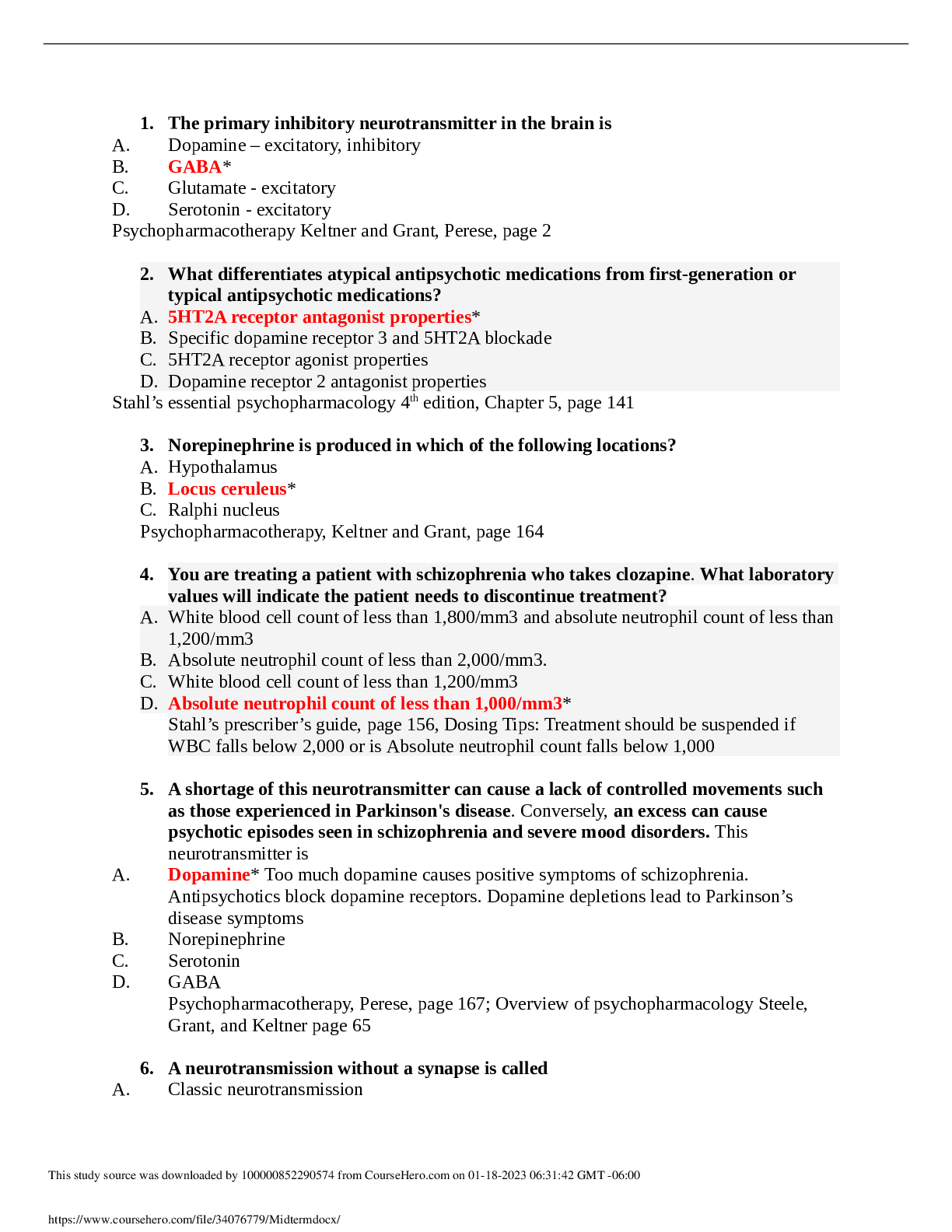
Buy this document to get the full access instantly
Instant Download Access after purchase
Add to cartInstant download
Reviews( 0 )
Document information
Connected school, study & course
About the document
Uploaded On
Jun 20, 2022
Number of pages
51
Written in
Additional information
This document has been written for:
Uploaded
Jun 20, 2022
Downloads
0
Views
64

